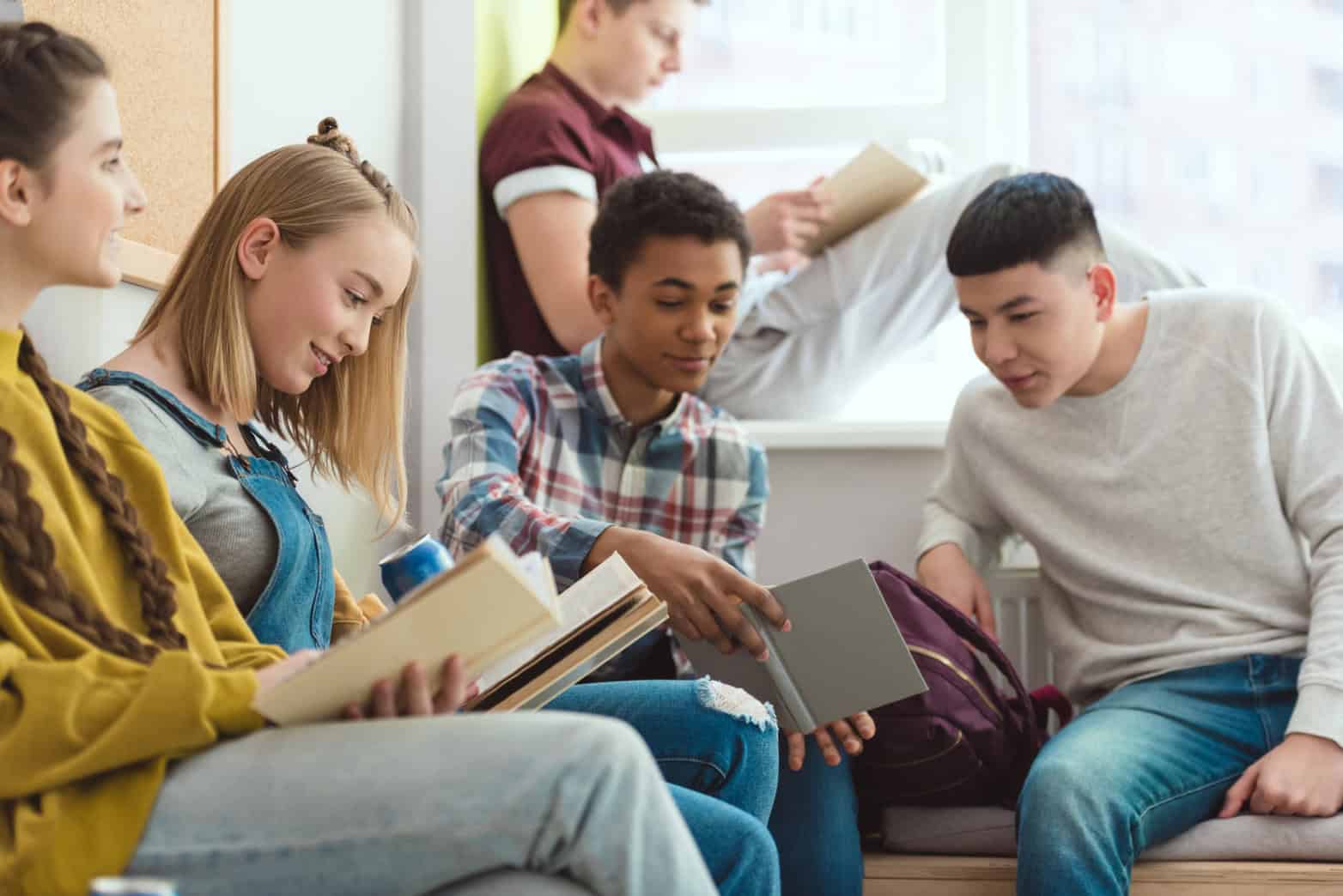As teachers, we know that students learn best when they feel safe, supported, and connected to their classroom community. We also know that, as students get older and gravitate more towards their peers than the adults in the building, it can be more difficult to build those trusting relationships. To help make sure your secondary students have the opportunities they need to establish and nurture meaningful connections, you can use the following four strategies. Whatever you decide to try in your own classroom, it’s important to ensure that every student knows how they can connect with you and feels empowered to do so.
1. One-on-One Conversations
The first and most basic strategy is to have one-on-one conversations with your students. But, there is some structure you can involve that makes this a lot more effective.
When I was a student, I idolized and adored so many of my teachers that I would consistently seek out opportunities to talk to them outside of class. So, when I started teaching, I assumed all of my students would similarly be proactive in connecting with me outside of class. I was wrong. Once I realized that waiting for students to come to me wasn’t likely to work out, I decided to make a more formal invitation to students.
I told students to sign up for a quick 15-minute time to come talk to me one-on-one. Students liked this idea because, for many, it meant they could miss 15 minutes of an elective to hang out. I had to clear this with the other teachers since I would usually pick up a student from class early or drop them off late after our conversation. Depending on the flexibility of your school’s schedule, you may want to do this in the mornings, during lunch, or after school.
In those first conversations, I kept it very casual and open for students to talk about whatever they wanted—academic or not. Some students shared their thoughts on classes, and others talked about the intra-friend group dramas they were dealing with. Students quickly recognized that I was genuinely there for them to talk, and that I truly cared about each of them as individual people, not just as my students.
I wish I could say every student then continued to seek me out, but that isn’t true. And that’s okay, because I built strong relationships with the students who did continue to come see and talk with me. Those who didn’t come still knew that I cared about them and that I was available to them whenever they might need it going forward.
2. Lunch Bunch
This next strategy requires a bit more organization but can be incredibly impactful for the students who need it. If you’ve ever worked lunch duty, you have likely seen the students who struggle to socialize and make friends during lunch. It can be heartbreaking to see your students struggle in this way, and it might feel like there isn’t much you can do. But, a lunch bunch is a great way to offer students an alternative that empowers them to build social connections in a structured way.
When I ran a lunch bunch, I would invite a group of about 10 students to come eat lunch with me in my classroom rather than the cafeteria once every other week. You could do this as often as your schedule and flexibility allow, but meeting every other week made the most sense for me to balance the other lunch duties I had—and to keep some time sacred for myself.
During lunch bunch, I would encourage students to just socialize and chat openly. At first, this required more ice breaker-type questions and activities, but as students grew more comfortable, they were better able to connect with one another and with me.
To choose the students, I asked each homeroom teacher for one or two students they thought would benefit from something like this. Not only did it help these students build social skills and create a more comfortable environment during lunch time, but it also showed them that I was a trusted, invested adult in the building they could rely on for connection and support.
3. Book Clubs
These next two strategies can be highly dependent on the schedule constraints of your individual school. During 6th-grade math, my school had a designated block of time for students to engage in independent reading with their homeroom teacher (me).
So, during that block of time, I would occasionally host a mini book club during which students could talk about whatever they were reading, share recommendations for one other, and also have a few minutes to make connections with me and one another. I would try and pull small groups of three to four students and rotate who came to the back table so all students would eventually have an opportunity to talk to me about what they were reading.
These little, informal, book-based conversations opened up an avenue for students to just speak honestly. They also encouraged students to keep me updated on their latest favorite books, which led to yearlong conversations and connections. While having one-on-one conversations was a great way to connect with students, leading the conversation with the specific topic of a book made it easier for some students to open up and begin talking to me about their interests and their lives.
If you don’t already have an established time and place for a book club to happen, you could consider creating an afterschool club if that is available to you, or make it something students can engage with during a study hall/free period if those are part of your school’s schedule.
4. Study Group
Again, this strategy is highly dependent on what your daily school schedule looks like. But, if you have the ability to host students in your classroom either before school, during a portion of the day, or after school, you can create a study group to not only support students’ academic development but also create meaningful connections.
For my study group, I would encourage students to stop by after school and study or complete homework in my classroom. It was a very informal study group where students could ask me for help if needed, but there was no organized review session or guided assignment completion. Instead, students could just work and chat with me or ask questions as they needed to. I was also usually doing my own lesson prep while students were there.
While some students would focus on their math assignments from my class, others would be working on their ELA, history, or science work. When they asked me for help with these subjects, it was a really good opportunity for us to work together to figure something out as I was less familiar with the work of those classes. Additionally, by trying my best to help a student do something that I wasn’t great at, I was able to show them both how much I cared about them and their success, and that it’s okay to need help and not know things.
These four strategies offer a jumping off point for you to consider how you can create space for students to talk to you and see you as the valuable, trustworthy member of their school community that you are.














